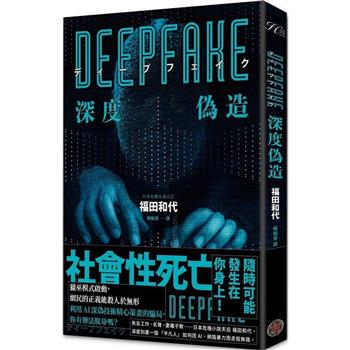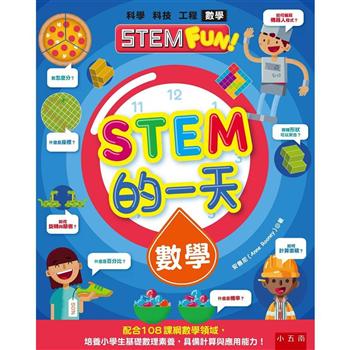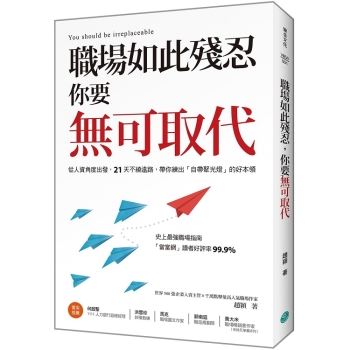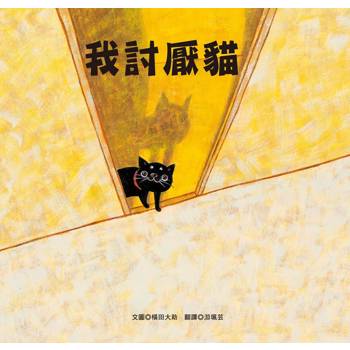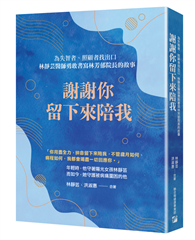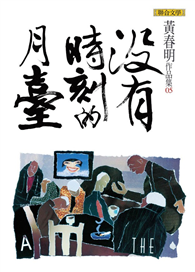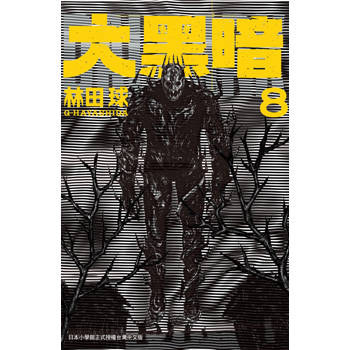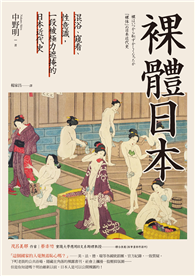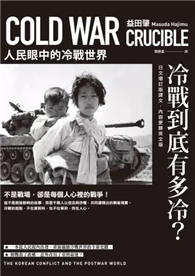名人推薦:
推薦序
原 研哉(Kenya Hara)
三澤遙曾經在我的事務所工作了約五年的時間。雖然打從她一出現,我便認為她擁有極優秀的才華,但當時的我,甚至是她本人應該也不清楚如此的才能會朝向何處並以什麼樣的方式嶄露頭角吧!所以,我當時便想將她暫時安置在原研究所(Hara Design Institute),幫助我去實現我想要完成的設計,應該是還不錯的安排吧。所謂「設計者」乃是——以為非常了解自己,事實卻是什麼也不知道。是一種非常主觀抽象的存在,彷彿是漂浮在這世上的水母一般。
「好像往這個方向前進比較好吧?!」於是便往心中所想的方向漂移過去。無論是我還是三澤遙,在此意義上都是相似的存在。只要是還活著的時候,就會自覺到何處才是可讓自己的能力發揚光大的方向,然後具有十分強大的欲求朝著那個方向前進。
這些年來三澤遙始終以一種嚴謹的態度跟隨著我所堅持的頑固,並且將她所擁有的感性與技術毫不保留地提供給我。所以不過數年的時間,她實際上已經成長為我所信賴的存在。不過儘管如此,倘若超出某個臨界點的話,我便感覺無法再要求她幫我的忙。就如同在動物的世界中,孩子長大後便要離父母而去。在創作者的深處也潛藏著某種本能,能夠預測「從此不要再一起工作比較好」的時機。
2014年三澤遙開始在日本設計中心(Nippon Design Center)裏面設立了屬於自己的研究室。並且也在銀座的Design Gallery開了個展。當時她的想法原本是希望展示自己歷年來的作品,但我建議她還是能夠展出新作會比較好。雖然展覽的準備期很短,而我或許也只能提供她稍微不負責任的建議,但我深知只要在她背後輕輕地推一把,她一定能創造些什麼出來。【水中風景】正是此次作品中的一部分。雖然的確是非常有趣的作品,但我卻不覺得意外。此次在台灣舉行的個展,更是在她背後再推一把。我衷心期待,三澤遙能夠朝向世界的中心奔馳而去。
Preface
Kenya Hara
Haruka Misawa worked in my company for a period of about five years. I noticed her exceptional talent right from the beginning, but I, or even she for that matter, was not aware of what direction she will be heading towards and how she will shine in the future! Therefore, I then temporarily placed her in Hara Design Institute, assigning her to assist me in completing the designs that I wanted to do. I thought that was a pretty good arrangement for her at that time. So-called “designers” are often people that think they know themselves well but are time and again ever so oblivious. Their existence is very subjective and abstract, resembling jellyfish that floats in water. They often listen to their voice inside to tell them which way to go, and this way of existence is something that Misawa and I seem to share. As long as we are still alive, we will instinctively know which way we should go and where we will be able to let our abilities shine. We are propelled by a strong sense of desire that pushes us towards the direction that we should be heading.
Throughout these years, Misawa has always worked diligently and accommodated my insisting stubbornness, contributing generously all of her perceptual and technical skills to help with my endeavors. In just a few years, I’ve become quite depended on her. However, beyond a certain point, I have also begun to feel that I can’t ask her for help anymore. Just like in the animal kingdom, when an offspring has grown mature enough, it will leave its parents. Buried deep inside each creative soul is also the ability to foresee the time when it would be best for two people to “stop working together.”
Misawa started her own research studio inside Nippon Design Center in 2014, and also presented a solo exhibition at the Design Gallery in Ginza. Her initial intention was to present the works that she has created throughout the years, but I suggested that it was better to just showcase her newer pieces. Although the preparation time for the exhibition was quite short, and perhaps my suggestion was slightly nonchalant and irresponsible, I knew that she only needed me to slightly nudge her from the back for her to come up with something brilliant. Waterscape was a part of that exhibition, and I wasn’t surprised that she created something that is utterly amazing. I’ve also once again pushed her just a little bit to realize this solo exhibition in Taiwan. I wholeheartedly anticipate seeing Misawa striving forward towards the center of the world.
Waterscape
三澤遙(Haruka Misawa)
水面之下,乃是會發生與空氣中完全相反力量的特殊環境。
在使用器皿與水,這兩種極單純的組合所構築而成的魚缸內空間,
充滿了平常在空氣中所無法成立的非日常世界。
這是起因於「浮力」,也就是與「重力」相反之往上之力在作用著的緣故。
比方說沙礫與水草,在空氣中兩者不消說會往地面墜下,
但來到水中卻是沙礫緩緩地沉沒至底下,而水草卻是靜靜地往水平面上升。
此外,在地面上會因自體重量而容易損壞的纖細構造物,
也因重力與浮力之相對作用力的關係,而能保持安定的狀態。
我有意識地控制「浮起」與「沉沒」兩股力道的相互作用,
嘗試從零開始探索水中棲息生物的生態環境,並且將其具體化,
這便是名為「Waterscape」的計畫。
在此呈現的作品雖仍處於雛形(prototype)的狀態,
但希望觀者能夠藉著觀賞與傳統魚缸完全不同的嶄新水中風景,
發現並體會其中潛藏的多種可能性。
Waterscape
Haruka Misawa
Underneath the surface of water is a unique environment that exudes an energy which is completely opposite from that which is surrounded by air.
The inner space of this fish tank is created by combining two simple elements of container and water, with an extraordinary world created that differs from the world with air.
Propelled by buoyancy, this is the result of an opposing gravity that is pushing upwards.
For example, when placed in midair, gravels and aquatic plants are bound to fall instantly to the ground, but when placed in water, the gravels would slowly sink to the bottom, and the aquatic plants would gently rise up to the water surface.
Moreover, delicate structures that are prone to damage caused by their own weight on land are able to maintain a stable state because of the relative force of gravity and buoyancy.
The interaction between gravity and buoyance is consciously controlled with this, seeking to explore from zero the ecology where aquatic beings dwell. The observations are then tangibly realized, transformed into the project, Waterscape.
The piece being presented here is still just a prototype, and the objective is for the viewers to see from it a brand new aquatic landscape that differs from what is perceived with conventional fish tanks, and for them to discover the endless possibilities hidden within.
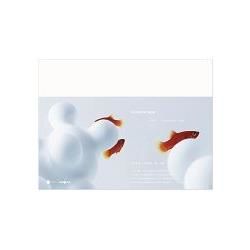
 共
共 